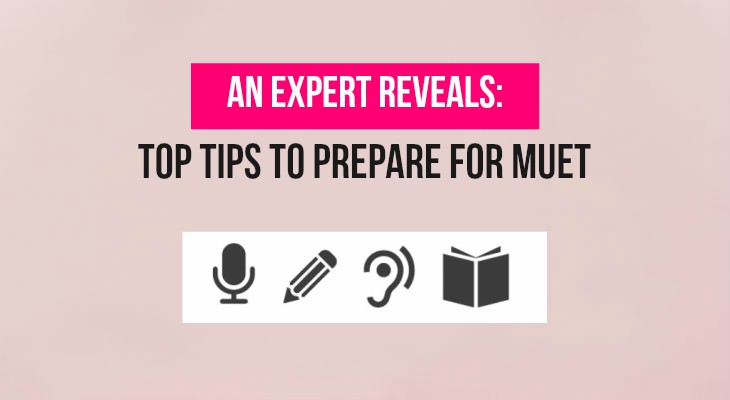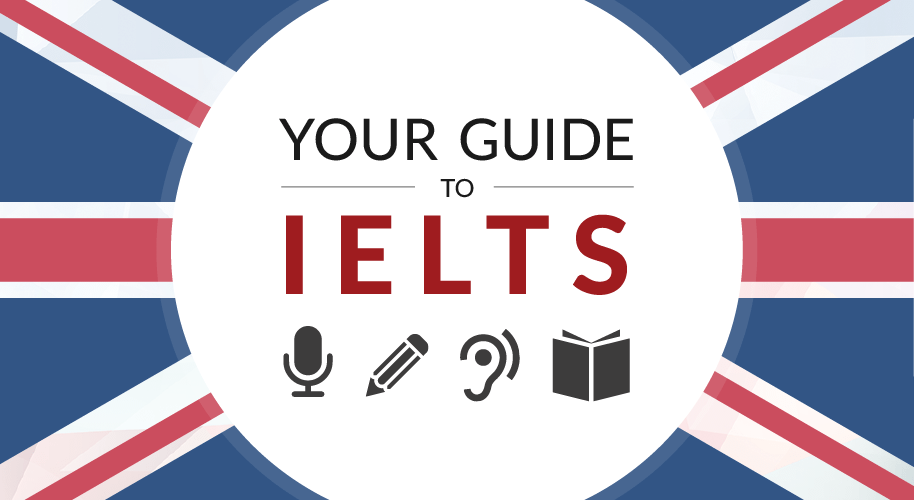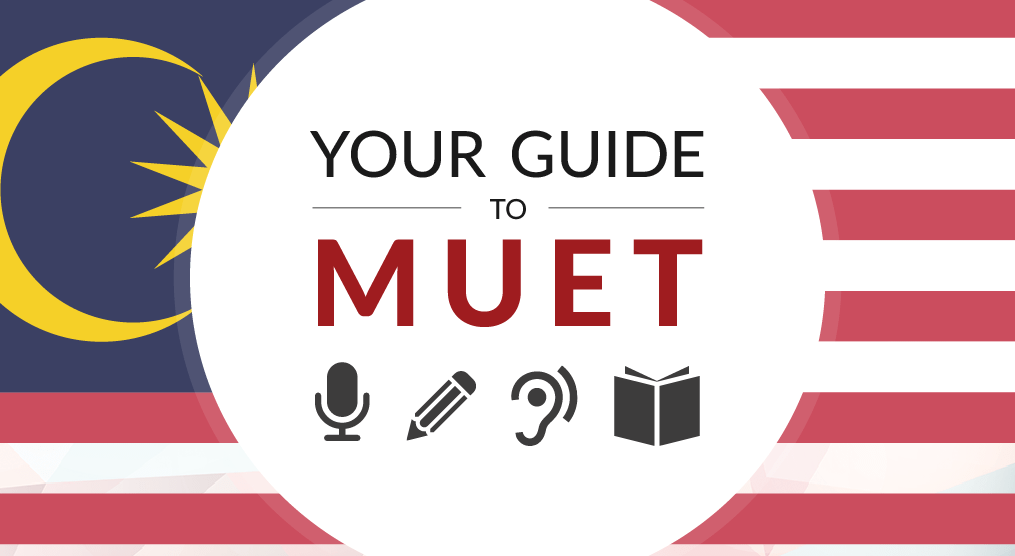An Expert Reveals: Top Tips to Prepare for MUET
Do you feel nervous or unprepared about sitting for MUET? Not to worry. We’ve curated some tips to help you bring your A-game to the test with the help of some expert advice.
Updated 14 Oct 2024

Note
This article was originally published on 27 October 2017. It has since been updated to reflect the current MUET format.
We’re only days away from November which means the Malaysian University English Test (MUET) is fast approaching!
If you think you’re well-prepared for your test after binge-watching Game of Thrones and listening to British actors spout complicated verses, think again.
Here’s all you need to know to help you conquer the Listening, Reading, Writing and Speaking components of the test — with advice from an expert, Mr Mohd Afizal bin Mohd Aris, a lecturer from Multimedia University (MMU), who has been teaching MUET for 14 years.
Let’s get started!
The listening component

This section requires you to listen to a text played over a speaker and answer questions based on the recording.
#1. Watch a ton of English TV programmes
This might raise a few eyebrows but allocating time to watch some English TV series is a fun and unconventional way to hone your language skills and familiarise yourself with the pronunciation of different English words.
Mr Afizal, who has 19 years of teaching experience under his belt, believes that this can help you improve your listening skills and keep up with the recording during the Listening test, in addition to assisting you to recall and transfer information correctly.
It’s worth remembering not to overlook your spelling as this can negatively affect your score, while it’s also important to read voraciously in the days leading up to the exam to enhance your spelling prowess and check your paper to prevent any careless spelling mistakes.
#2. Read, listen and write
Here’s some sneaky advice — read the questions first to identify the information you need to look out for.
When the recording is played, scribble the answers to the questions you’ve read and transfer it neatly when you are given time to do so. You can revisit the questions you missed when the recording is played a second time.
PRO TIP
Pay attention to the instructions! Some questions require you to answer with less than 3 words whilst others specify that you write not more than 5.

The reading component

This section tests your reading skills by prompting you to answer multiple-choice questions based on a series of linear (speeches, reports, etc.) and nonlinear (statistics, graphs, etc.) texts.
#3. Skim and scan through the text
Start by quickly running through the text to get a general idea of what the passage is about. Focus on topic sentences (i.e. the first sentence of each paragraph) and skim quickly through the rest of the paragraph. The key here is to understand the theme, structure and purpose of the entire passage.
Subsequently, go through the questions and scan the passage, picking out keywords to help you locate the answers. You might want to consider glancing through the questions even before skimming, as this will give you an idea of what content you’re looking for.
Using this skim and scan method, understanding long chunks of texts will soon be as easy as pie!
#4. Practice makes perfect
Keep in mind that the questions asked during MUET are rarely straightforward.
Doing practice questions will help you recognise paraphrasing, where information within the text is worded differently in the question; make inferences using common sense; and draw conclusions based on the information given.
This will improve your ability to scan for answers in the passage within the time limit.
PRO TIP
Read current issues from international and local news sources, such as the New Straits Times, Channel NewsAsia and even National Geographic, to get acquainted with potential reading materials you could be tested on.
The writing component

This component consists of 2 tasks. Question 1 requires you to respond to a letter or an email, whilst Question 2 requires you to write an essay on a given topic.
#5. Remember your introduction, body and conclusion
Like any writing test, an essay must include an introduction, body and conclusion.
A. Introduction
Provide a thesis statement which may require you to state a clear stand, depending on the question.
Example: “The most valuable thing in life is friendship. Do you agree or disagree?”
Your introduction might read: Human beings depend on many aspects to add value to their lives. Some of what we appreciate are wealth, health and relationships. In my opinion, friendship is the most valuable aspect of life as good friendships help us celebrate life and endure hardships.
B. Content
Be sure to elaborate your points clearly and give relevant examples. Organise your points to ensure your discussion flows smoothly from one sentence to another. Marks will be allocated for students’ command of the language and vocabulary as well as organisation.
PRO TIP
Using the example thesis statement above, the content of the essay should be about how friendships help you celebrate life and endure hardships.
C. Conclusion
Restate your stand by rephrasing the thesis statement. You are also encouraged to provide suggestions, hopes or predictions for the future surrounding the topic to complete your essay.
Apply for university with EduAdvisor
Secure scholarships and more when you apply to any of our 100+ partner universities.
Start nowThe speaking component

This test comprises of Task A and Task B, where you are required to discuss a given topic both individually and in a group setting respectively.
#6. Simulate the exam day
Work together with your friends by sharing information on current affairs, such as socio-cultural issues, economics, science and technology and sports. Brainstorm advantages and disadvantages surrounding these issues and suggest solutions to problems to get the juices flowing in preparation for your test.
Practise presenting in front of your friends and be open to any criticism they give on your presenting skills.
#7. Remember your 5 wives and 1 husband
You’ll be given a mere 2 minutes to prepare for the individual presentation, but don’t be overwhelmed! Approach your topic by answering these 5 basic questions: who, what, when, where, why and how.
Example: “In your opinion, one of the benefits of hosting the Commonwealth Games is that Malaysia will be internationally known. Discuss.”
You could say: The Commonwealth Games is an international sporting event involving former territories of the British Empire. Malaysia will be thrust into the limelight as athletes from all over the world congregate to participate in our home country and the various events will be telecasted live globally. It is also an opportunity for the Malaysian contingent to showcase their talent to the world as they take part in the Games.

#8. Take notes during the group interaction
If you’re tempted to rehearse your own lines as you wait for your turn during the group interaction, think again!
Listen carefully as other candidates are presenting during Task A and take note of pertinent points. Not only is this a mark of attentiveness and active listening, you will need to support or oppose the points made by your fellow candidates during the group interaction.
#9. Make an impression
It’s not just what you say but how you say it!
Be sure to greet the examiners and your fellow candidates before starting. Show enthusiasm by smiling and maintaining eye contact with your listeners and speak clearly so you are easily understood.
Lastly, you may be shaking with nervousness on the inside but don’t forget to smile!
So there you have it. We hope these tips will get you in tip-top shape before sitting for MUET. Good luck!





